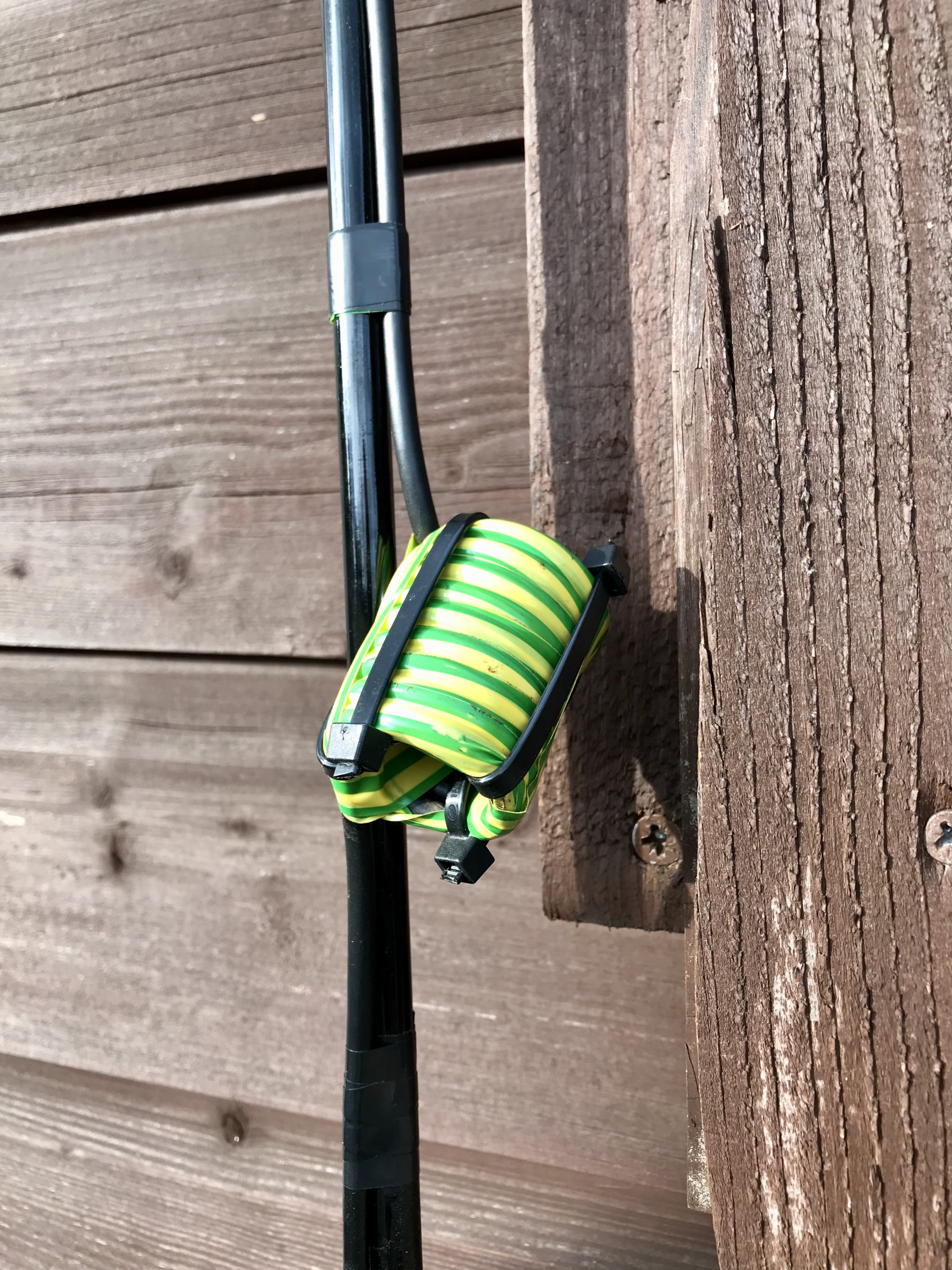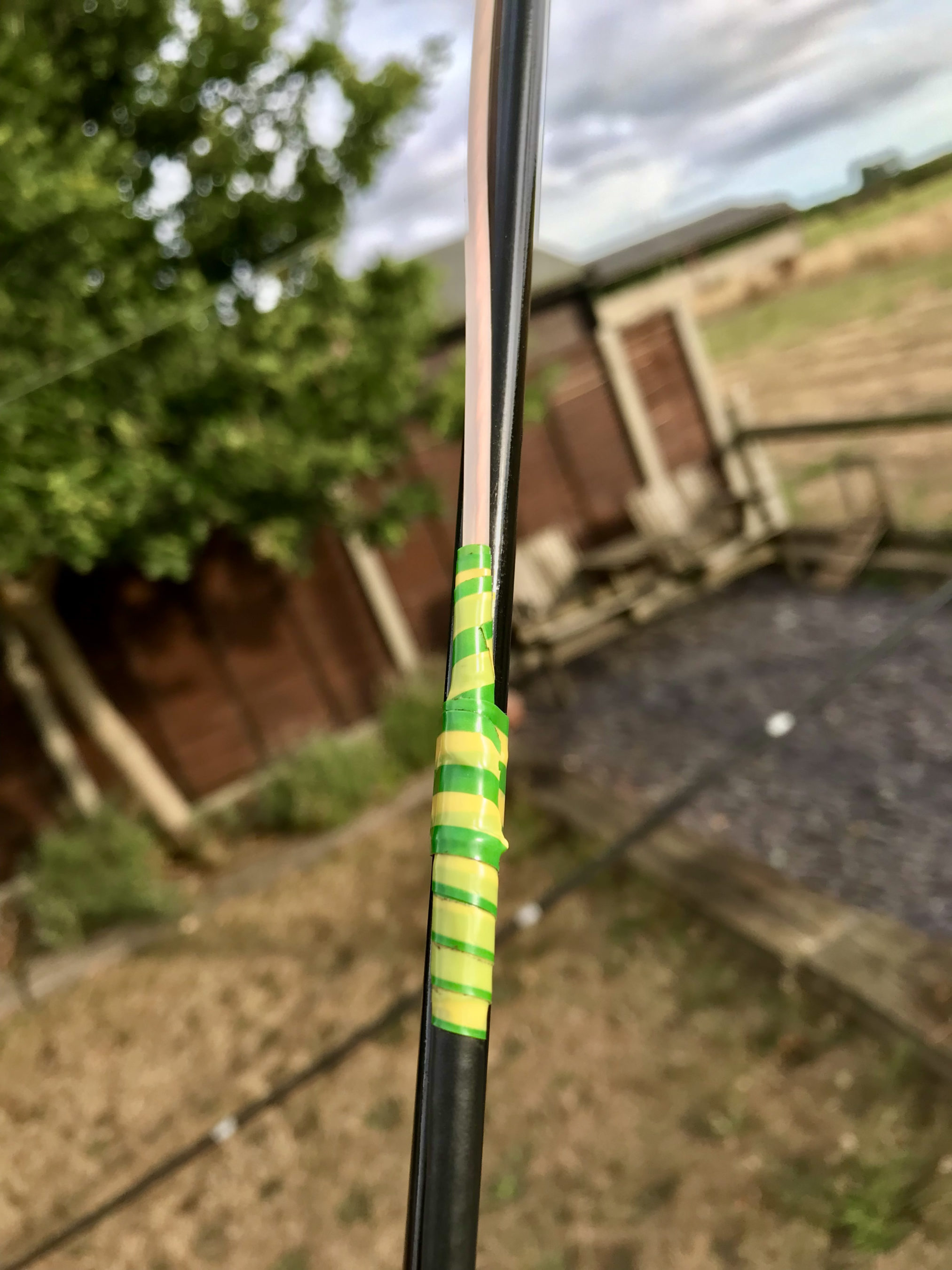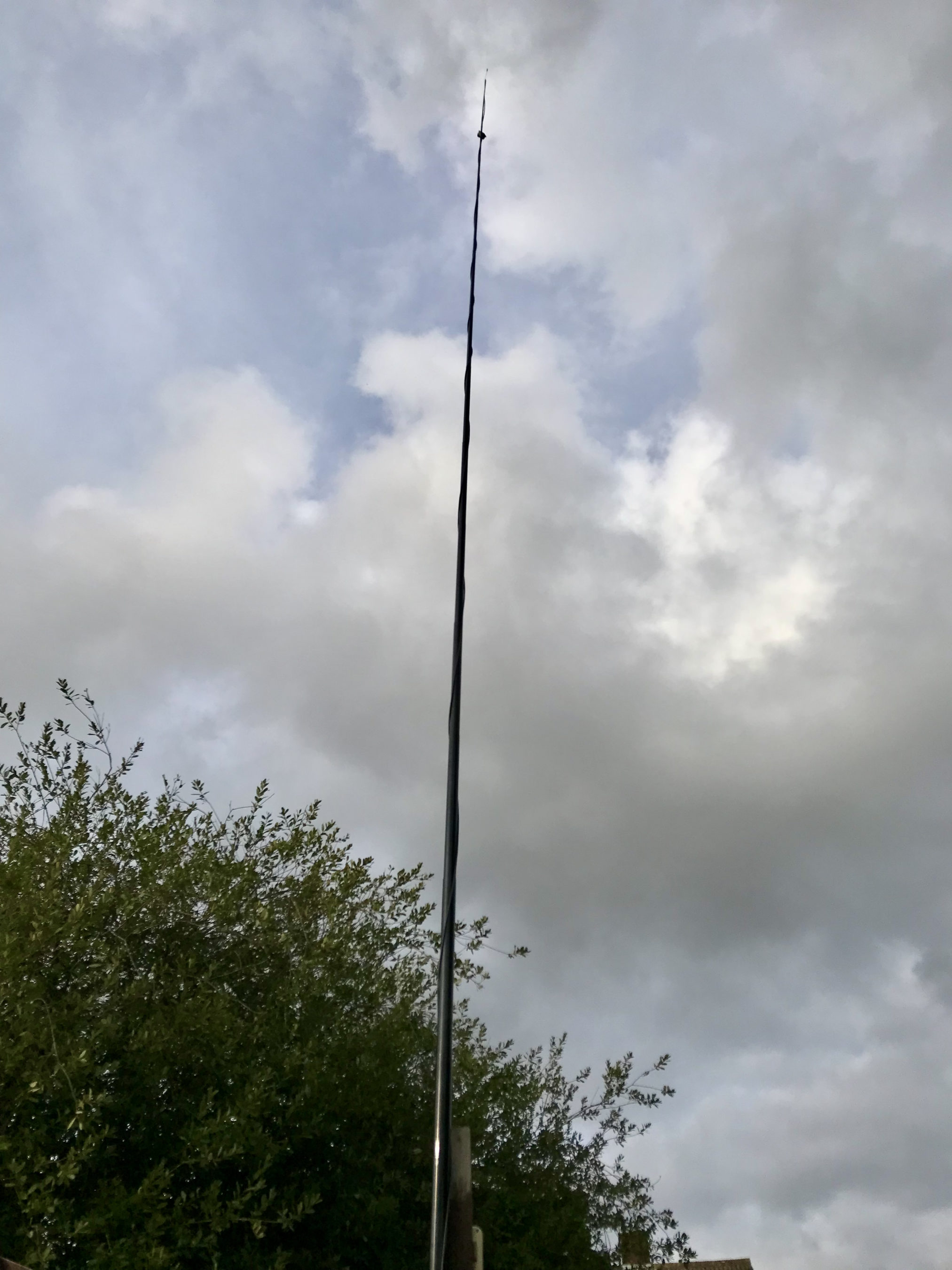Since purchasing my Icom IC-705 radio I’ve only used it on the HF bands. Since the IC-705 is a “shack-in-a-box” I thought it was about time I ventured up onto the VHF/UHF bands and add another string to my bow.
Since I don’t have an antenna for these two bands I’d need to build something. I’m not really interested in DXing on the VHF/UHF bands as I’d need a yagi or two, a rotator and would need to get the entire setup up high on the chimney on the house.
We’re very fortunate in that there are a good many repeaters on VHF/UHF in East Anglia with quite a few being well within range of my QTH.
So I decided to go with a simple vertical antenna of some sort that I could easily attach to the top of a 10m spider pole and pop up in the garden without too much hassle.
The simplest of all antennas to build for any band is an end fed vertical dipole. It’s made purely from a piece of coax cable, you can’t get much simpler.
Using some dimensions I found online I unrolled a length of RG58U and set about cutting it to resonance for the two bands.
To start I measured out 910mm of RG58U and put a piece of tape around the cable at the 910mm point. I then stripped the top 460mm of the outer and braid from the coax so that the inner wire and plastic insulation was exposed. This then left 450mm of coax with the braid still in place to make up the 2nd half of the vertical dipole.
At the 910mm marker I wound the coax 9 times around a 27mm former to create a choke balun. I taped the coil up to ensure it kept it’s shape, removed it from the former and then used a few zip ties to hold it in place.

The diagram above aids in visualisation of the make up of the antenna that is made from a single piece of RG58U coax cable.

I next wound some electrical tape around the point on the antenna where the outer insulation and braid ended so that it would stop moisture getting into the rest of the coax and causing problems in the future. I also put a bit of electrical tape across the top of the end of the wire to stop moisture getting into the inner wire and then a piece of electrical tape around the wire to ensure it was fully sealed.

At this point the antenna was complete! It literally took a few minutes to make. I could now either cut the coax a few centimetres from the bottom of the coil and fit a PL259 or just continue the coaxial cable back into the shack and fit a PL259 on the end. I decided to go with the latter as it’s one less connection to make.

Once complete, I taped the antenna to the top of a 10m spider pole and then ran the rest of the coax back into the shack and soldered on a PL259 connector.
Raising the spider pole up to its maximum length put the antenna some 10m up above the ground. Hopefully this will give me a relatively clear path to the local repeaters.
Plugging the antenna into the IC-705 and checking the SWR I found it was <1.2:1 across the entire 2m band and <1.5:1 across most of the 70cm band. It was perfect for what I wanted!

I configured the local repeaters into the the IC-705 memories so that I could easily switch from one repeater to the next with all the appropriate tone and duplex frequency shifts set at the touch of a button.
My local 2m repeater GB3PO comes in at 5/9+10dB without any preamp and the local 70cm repeater GB3IH comes in at 5/9+5dB without any preamp. I was really pleased with the results and set about having a chat with other local HAMs on the local repeaters. It’s been a while since I’ve used the mic on this radio and it made a nice change!
To my surprise I found I could get into far more repeaters than I ever imagined. GB3NB in Norwich is 5/8 as are a number of repeaters down in Essex. This gives me quite a scope for chatting on the VHF/UHF bands via the repeater network.
To my surprise I can also hear ON0WV in Brugge Belgium, unfortunately it’s on the same frequency as the local 2m GB3PO repeater and so often gets drowned out completely but, it’s good to know that when there’s a lift in propagation I should be able to get into the near continent without too much hassle.
If you’re looking to build a simple but, effective 2m/70cm vertical for local repeater access then I highly recommend making an end fed vertical dipole. It only takes a few minutes to cut the cable to length, remove the outer sheath and braid and wind the choke balun, it really couldn’t be any easier.
More soon …
